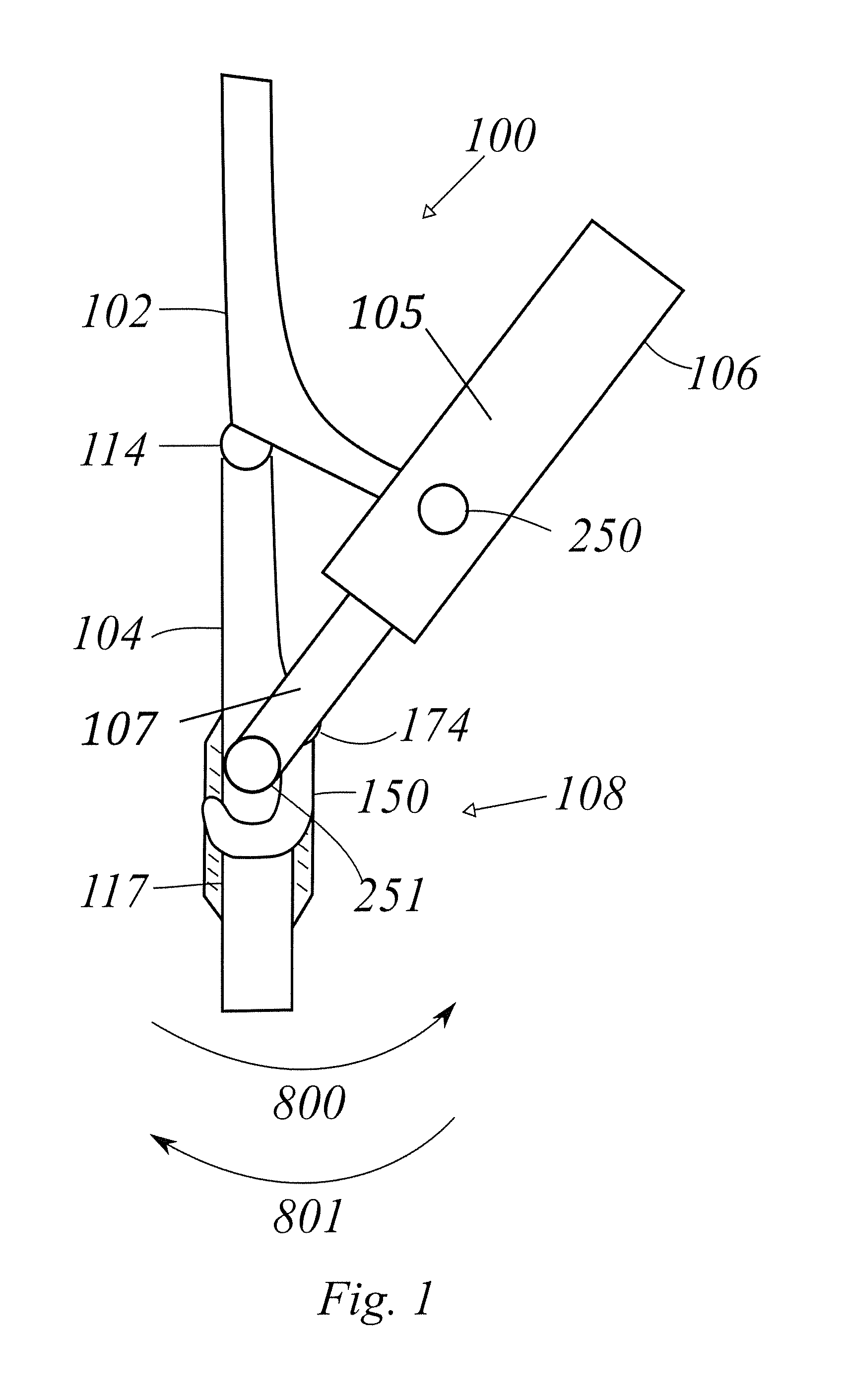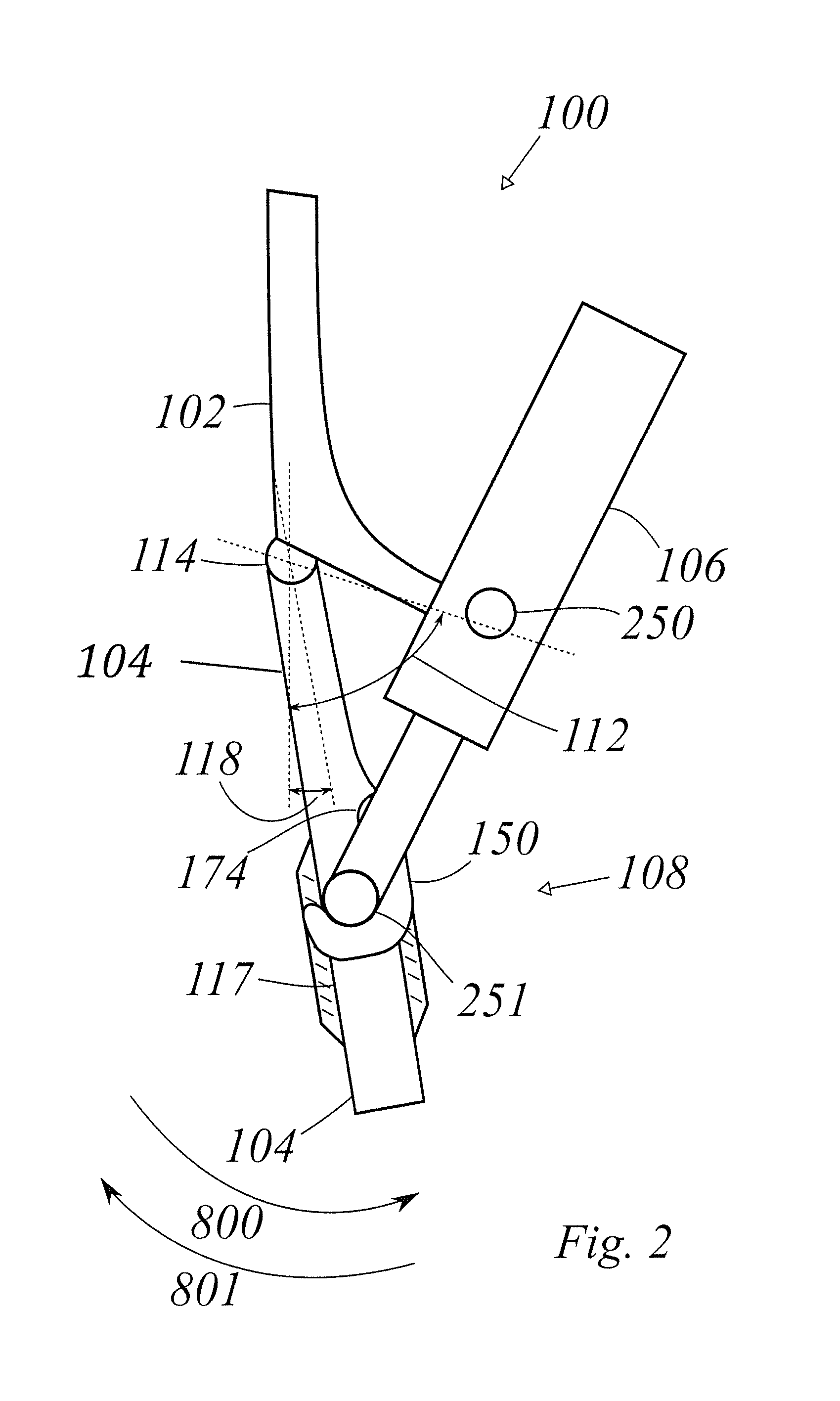Passive power-conservative artificial knee
a passive, power-saving technology, applied in the field of artificial knee prosthetics and orthotics, can solve problems such as overuse injuries, and achieve the effects of reducing pain, reducing pain, and reducing pain
- Summary
- Abstract
- Description
- Claims
- Application Information
AI Technical Summary
Benefits of technology
Problems solved by technology
Method used
Image
Examples
Embodiment Construction
[0051]FIG. 1 shows an embodiment of a passive power-conservative artificial knee 100 which is configured to be coupled to a lower extremity of a person 200. FIG. 1 shows the passive power-conservative artificial knee 100 without a person 200 (depicted later in FIGS. 37-40). Passive power-conservative artificial knee 100, among other things, comprises a thigh link 102, a shank link 104, a compressive force generator 106, and a release mechanism 108. Shank link 104 is rotatably coupled to thigh link 102 along knee joint 114.
[0052]In some embodiments of the invention, as shown in FIG. 32, thigh link 102 is configured to move in unison with a user's thigh 202. In some embodiments of the invention, shank link 104 is configured to move in unison with a user's shank 204. In some embodiments of the invention, exoskeleton 100 further comprises a thigh connector 206 that allows coupling to a user's thigh 202, and a shank connector 208 that allows coupling to a user's shank 204. In some embodi...
PUM
 Login to View More
Login to View More Abstract
Description
Claims
Application Information
 Login to View More
Login to View More - R&D
- Intellectual Property
- Life Sciences
- Materials
- Tech Scout
- Unparalleled Data Quality
- Higher Quality Content
- 60% Fewer Hallucinations
Browse by: Latest US Patents, China's latest patents, Technical Efficacy Thesaurus, Application Domain, Technology Topic, Popular Technical Reports.
© 2025 PatSnap. All rights reserved.Legal|Privacy policy|Modern Slavery Act Transparency Statement|Sitemap|About US| Contact US: help@patsnap.com



